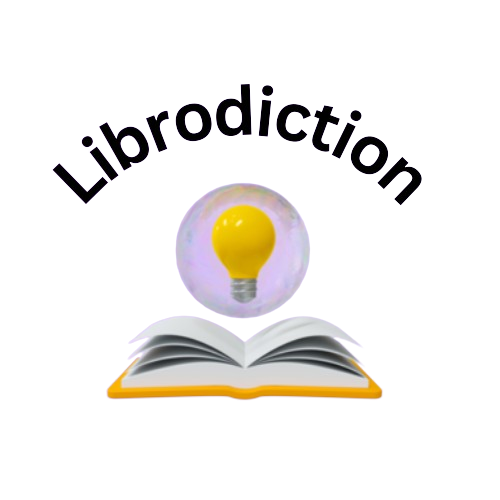Introduction
Romance can mean different things to different people, but generally, it involves feelings of love, excitement, and emotional connection in a relationship. While some may discover it in large gestures and emotional moments, others may find it in modest, ordinary deeds of compassion and kindness. Romantic novels, also known as romance novels. While romance may be more about physical attraction and desire for some, it may also be about shared experiences and strengthening ties for others. In the end, it’s a subjective and individualized experience that differs greatly between individuals.
Love is a profound, delicate, indescribable emotion of love and concern for another person. It might be derived from kinship, admiration for a person’s attractive traits, or an underlying sense of unity. Emotional attachment, warmth, protectiveness, and caring are all examples of love-related emotions. Love is a complicated and multidimensional feeling that is frequently characterized as a powerful, deep, and intense affectionate, warm, and caring feeling toward another person. It is an essential aspect of the human experience that shapes our attitudes, actions, and interpersonal interactions. It is fundamentally an intense feeling of attachment and connection to another person. It can take on various forms, including love for mankind as a whole, familial love, romantic love, and platonic love. Feelings of empathy, compassion, and understanding for the person we love are frequently indicative of love. Love is also frequently linked to the need to uphold, cherish, and safeguard the people we love. It entails being prepared to put their happiness and well-being, occasionally even above our own, first.
In addition to providing us with perseverance and power, love can also assist us overcome obstacles and misfortune. Apart from these affective dimensions, actions and behaviors can also be utilized as means of expressing love. This can involve showing affection, saying encouraging things, and doing deeds of compassion. It takes these kinds of love to create and sustain enduring, wholesome relationships. All things considered, love is a very subjective and individualized feeling, and each person’s interpretation of it will be very different. Nonetheless, it is widely seen as a strong and beneficial energy that enhances our lives and forges stronger bonds with others.
Affection is a mild sentiment of fondness or like. It is a softer kind of love that frequently entails sentiments of warmth, intimacy, and tenderness. There are many different methods to show affection, including hugs, kisses, encouraging words, and deeds of kindness. A warm, fuzzy emotion of fondness, concern, and like toward someone or something is called affection. It is a vital component of interpersonal interactions and can be shown in many different ways, both through words and nonverbal cues.
It often characterized by feelings of warmth, closeness, and attachment. It can originate from friendships, romantic connections, and ties to one’s family, among other things. Positive sentiments and emotions like respect, admiration, and gratitude are often the foundation of affection.
Romantic novels are popular for their ability to evoke strong emotions in readers. Fiction that centers on the romantic ties between characters is known as a romantic novel. These books usually deal with themes of love, passion, and personal development. Despite the fact that the plot can vary greatly, they frequently center on a love tale between two individuals. Romantic novels can be lighthearted and amusing or intensely serious and emotional, and they can take place in any era or place.
Romantic novels have a long history and a profound effect on readers all over the world, making them a beloved literary genre. From its beginnings in the 18th century with novels like as “Pamela” and “Pride and Prejudice,” they have developed into a broad genre that includes several subgenres such as historical, paranormal, and contemporary romance. Romantic novels, though sometimes written off as “fluff,” actually address serious topics like family, identity, and social challenges while providing readers with a good dose of amusement and reflection. Their varied cast of people and interpersonal dynamics mirror readers’ own experiences. Romantic novels have a profound cultural impact, influencing how people view relationships and love. Their enduring presence on bestseller lists and their repeated adaptations into motion pictures and television shows attest to their popularity. Also, there is a thriving online community for this genre.
A comprehensive summary would go into great detail about the plot, characters, setting, and themes of a romance novel. Along with the main story points—conflicts, resolutions, and character development—this synopsis will also cover these turning points. It might also examine the novel’s major themes of love, relationships, and personal development. All things considered, a thorough synopsis of a romance book would try to give a thorough rundown of the narrative while emphasizing its most important points.
Romantic novels have the power to influence readers’ opinions in a number of ways.
- Shifting Perspectives on Love: Idealized portrayals of love and relationships are common in romantic novels. Readers may start to reevaluate their own views and expectations about romance, love, and relationships after becoming engrossed in these tales.
- Emotional Impact: Readers may feel strongly stirred when they read about the passionate feelings and experiences of the protagonists in romance books. A deeper appreciation of the intricacies of interpersonal relationships as well as increased empathy and understanding of others might result from this emotional connection.
- Inspiration and Hope: Romantic novels frequently tell tales of people succeeding in spite of adversity and falling in love. These stories have the power to encourage readers to have hope that they too may find happiness and love, even in the face of adversity.
- Self-Exploration: By relating to the characters in romance books, readers might start to examine their own aspirations, morals, and views toward relationships and love. Personal improvement can result from this introspective process.
- Escapism and Relaxation: Romantic novels provide a form of escapism, allowing readers to temporarily immerse themselves in a world of romance, fantasy, and adventure. This can offer a much-needed respite from the strains and difficulties of daily living, encouraging rest and mental health.
Overall, romantic novels have the potential to change a person’s mind by offering new perspectives, evoking strong emotions, inspiring hope, fostering self-exploration, and providing a form of escapism.

A few romance novels suitable for readers of all ages
Readers of all ages can enjoy a wide variety of romance novels. Here are few instances:
- Jane Austen’s famous work “Pride and Prejudice” chronicles the romantic entanglements between Elizabeth Bennet and Mr. Darcy in 19th-century England.
- Healing her heart, a short story refer to a process someone undergoes to recover from emotional pain, such as a breakup, loss, or trauma.
- L.M. Montgomery’s “Anne of Green Gables” chronicles the adventures of the gregarious Anne Shirley in the town of Avonlea, particularly her amorous emotions for her neighbor, Gilbert Blythe.
- John Green’s book “The Fault in Our Stars” chronicles the relationship between two teens, Augustus Waters and Hazel Grace Lancaster, as they battle with love, tragedy, and cancer.
- Rainbow Rowell’s book “Eleanor & Park” narrates the tale of two outcast teenagers named Eleanor and Park who fall in love due to their mutual appreciation of comic books and music.
- Jo jo Moyes’ book “Me Before You” chronicles the unforeseen attachment that develops between Louisa Clark, a young woman who takes on the role of caregiver for Will Traynor, a paraplegic.
These are but a handful of the numerous romantic novels available for readers of all ages to enjoy.
